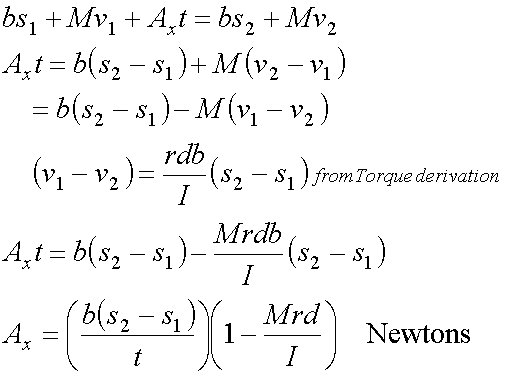RACQUET SCIENCE — using physics to help select a racquet
Derivation of the Impulse Reaction formula
A complete description of all variables used in this derivation follows at the end. See the accompanying remarks.
Applying Conservation of Linear Momentum, the sum of momenta before impact, plus the Impulse Reaction (Ax) at the axis of rotation times the dwell time (t), will equal the sum of momenta after impact. Linear momentum is mass times velocity (Mv). In abstract terms, the conservation equation looks like this:

Ax = Impulse Reaction, the translational force acting at the axis of rotation due to impact, in Newtons. Note that when d = q (q is the distance from the axis of rotation to the center of percussion), the expression within the second set of parentheses becomes zero.
b = ball mass, in kilograms
M = racquet mass, in kilograms
s1 = velocity of the incoming ball, in meters/second
s2 = velocity of the outgoing ball, in meters/second
t = dwell time, or duration of impact, in seconds
v1 = linear velocity, just before impact, of racquet mass center, in meters/second
v2 = linear velocity, just after impact, of racquet mass center, in meters/second
r = distance from the axis of rotation to the mass center, in centimeters
d = distance from the axis of rotation to the impact point, in centimeters
I = swingweight, or moment of inertia, of the racquet about the axis of rotation under consideration, in kg·cm²